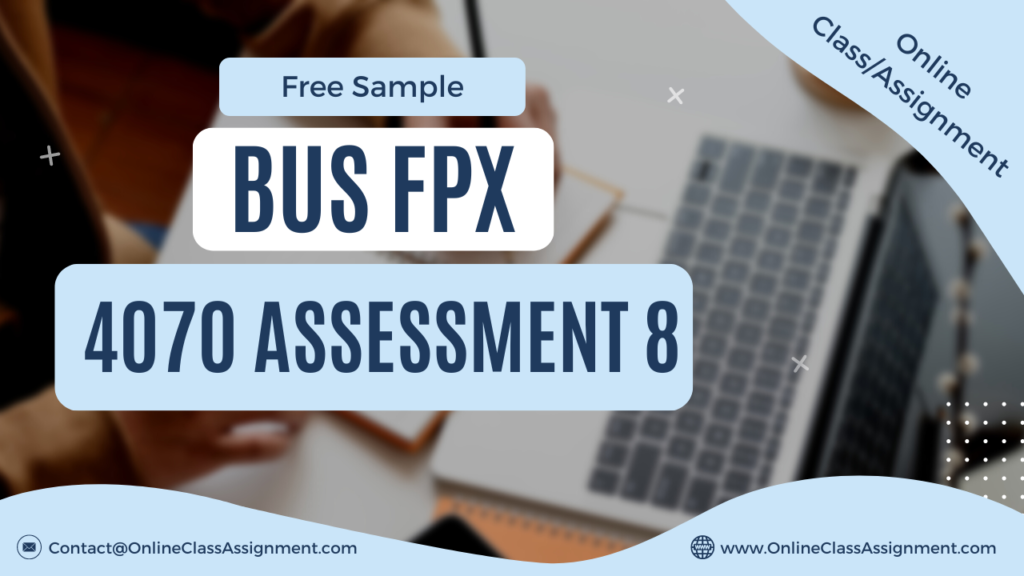
BUS FPX 4070 Assessment 8 Capital Structure and Financial Health
Student Name
Capella University
BUS-FPX4070 Foundations in Finance
Prof. Name
Date
Problem 1: Optimal Capital Structure
XYZ Inc. is currently determining its target capital structure, with the Chief Financial Officer (CFO) suggesting that the optimal debt-to-capital ratio falls between 25 percent and 60 percent. Analysis of projected data reveals the following:
| Debt/Capital Ratio | Projected EPS | Projected Stock Price |
|---|---|---|
| 25% | $4.20 | $40.00 |
| 35% | $4.45 | $41.50 |
| 45% | $4.75 | $41.25 |
| 60% | $4.50 | $40.59 |
Determining XYZ’s optimal capital structure and the debt-to-capital ratio at which the company’s Weighted Average Cost of Capital (WACC) is minimized is crucial.
According to the Corporate Finance Institute (CFI), capital structure refers to “the amount of debt and/or equity employed by a firm to fund its operations and finance its assets,” with the optimal structure being the proportion resulting in the lowest WACC.
Optimal capital structure: Based on the data, XYZ’s optimal capital structure would be at a debt-to-capital ratio of 45%, coinciding with the higher projected stock price.
Minimized WACC: The debt-to-capital ratio yielding the minimized WACC for XYZ is also 45%. At this ratio, the projected EPS is relatively higher, indicating a favorable balance for the cost of capital and lower debt for the company.
Problem 2: Break-Even Analysis
XYZ Inc. sells photo frames at $20 each, with fixed costs amounting to $60,000 and variable costs of $7 per photo frame.
Gain or Loss at Different Sales Levels:
- At 6,000 photo frames: Gain = $18,000
- At 15,000 photo frames: Gain = $135,000
Effect of Selling Price Increase to $25:
- Break-even point at $25 selling price: 4,615 units
The analysis highlights the significance of break-even point as the minimum units to cover production costs, with fixed costs remaining constant.
Effect of Selling Price Increase with Variable Cost Rise:
- Break-even point with selling price at $25 and variable costs at $13: 5,000 units
The increase in variable costs alongside the price hike escalates the break-even point.
Problem 3: WACC and Optimal Capital Structure
XYZ Inc.’s finance department provides debt cost data at various levels of debt-to-capital ratio. Additionally, using the Capital Asset Pricing Model (CAPM), XYZ estimates its cost of common equity.
WACC at Optimal Capital Structure: With an equity/asset ratio of 60% and a debt weight of 40%, XYZ’s WACC is 13.8%.
Effect of Anticipated Increase in Business Risk: Anticipation of increased risk would likely prompt XYZ to adjust its working capital, minimizing debts until the risk is mitigated.
Effect of Congressional Tax Rate Increase: A significant increase in corporate tax rate would alter XYZ’s target capital structure, reducing debt due to its tax-deductible nature and subsequently lowering WACC.
BUS FPX 4070 Assessment 8 Capital Structure and Financial Health
Problem 4: Cost of Trade Credit and Bank Loan
XYZ Inc. purchases $10 million of materials with credit terms of 3/5, net 60. Analysis of forgoing discounts and obtaining additional credit reveals the nominal and effective cost.
Additional Credit Analysis:
- Additional credit amount without discounts: $1,506,849.32
Nominal and Effective Cost of Credit:
- Nominal cost: 20.57%
- Effective cost: 22.22%
Effective Cost of Bank Loan:
- Effective cost of bank loan at 8% interest, paid monthly: 7.8%
Conclusion: Based on nominal and effective rates, utilizing a bank loan appears to be the most cost-effective option for XYZ.
References
Brigham, E. F. (n.d.). Fundamentals of financial management. Retrieved from https://capella.vitalsource.com/reader/books/9780357088562/epubcfi/6/62[%3Bvnd.vst.id ref%3DM31]!/4/528/1:621[199%2C4.]
Corporate Finance Institute. (n.d.). Capital structure. What is capital structure? Retrieved from https://corporatefinanceinstitute.com/resources/knowledge/finance/capital-structureoverview/
Edspira. (2018, September 9). Youtube.com How to calculate cost of equity using CAPM. Retrieved from https://www.youtube.com/watch?v=JyUBm9M7Wyw
BUS FPX 4070 Assessment 8 Capital Structure and Financial Health
Get Capella University Free Business Samples
BUS FPX 3007
BUS FPX 3011
BUS FPX 3021
BUS FPX 3022
BUS FPX 3030
BUS FPX 3040
BUS FPX 3050
BUS FPX 4012
